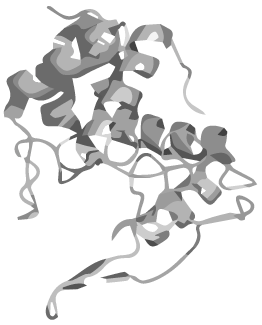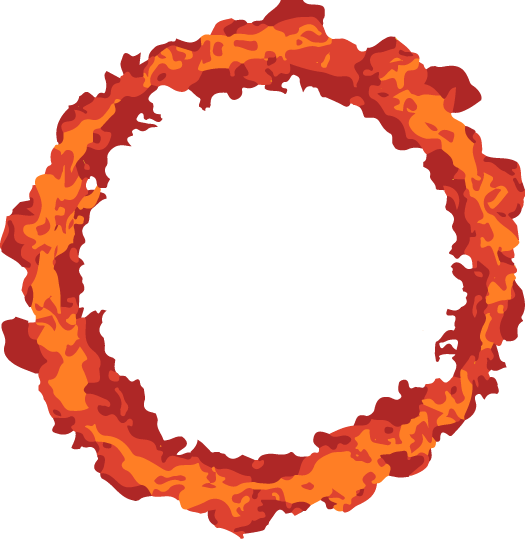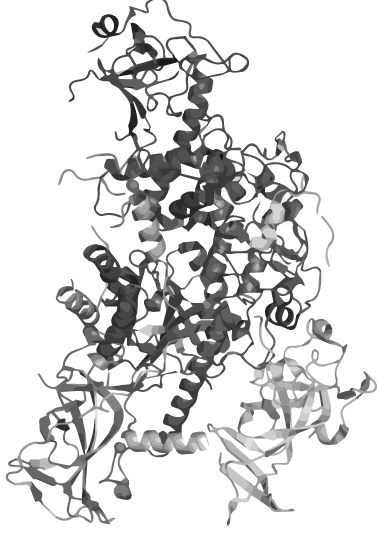Team:Heidelberg/Project
From 2014.igem.org
| Line 426: | Line 426: | ||
</div> | </div> | ||
</div> | </div> | ||
| - | <div class="container | + | <div class="container"> |
<div class="col-md-12 col-sm-12 col-xs-12" style="margin-top: 20px;"> | <div class="col-md-12 col-sm-12 col-xs-12" style="margin-top: 20px;"> | ||
</div> | </div> | ||
| Line 709: | Line 709: | ||
}); | }); | ||
| - | }) | + | $('#myTab a').click(function (e) { |
| + | e.preventDefault() | ||
| + | $(this).tab('show') | ||
| + | }) | ||
| + | }); | ||
</script> | </script> | ||
</html> | </html> | ||
Revision as of 21:31, 17 October 2014
 Project overview
Project overview
Proteins are the functional basis of all biological processes and being able to control and improve their functions through design and engineering is one of the fundamental goals of synthetic biology. While conventional proteins subsist as chains of amino acids with defined beginning and end, nature has found a curious way of enhancing a protein capabilities: circularization. In head to tail circularized peptides the terminal amino acids are joined together just like in the rest of the chain, forming a circular structure. Such peptides have been discovered in all kingdoms of life during the past years and they are unified by an extreme stability towards high temperatures, proteases and changes in pH.
Given these attractive features of circular proteins, methods to circularize otherwise linear proteins have been devised, one of which is based on autocatalytic protein domains called inteins. We have applied the principle of circular peptides to synthetic biology by introducing a BioBrick-based, standardised method for circularizing any protein using inteins.
Synthetically connecting a protein's termini without disrupting its 3D structure and function is, however, a delicate task which has so far been accomplished only for relatively small proteins whose ends lie close to each other. We therefore saw the need for a comprehensive software that predicts the process of circularization. With CRAUT we have brought into existence a powerful open-source software to predict an optimal linker to support circularization of a protein preserving its 3D structure and function.
Due to our lack of calculating power we deployed this software on the distributed computing platform BOINC in an initiative we call iGEM@home.
Based on our software predictions, we constructed linkers to circularize the 871 a.a. long methyltransferase Dnmt1 and provide data suggesting that circular DNMT1 is more functional than its linear counterpart at high temperatures. Our results have strong implications for developing an innovative PCR-based technique that could revolutionize epigenetic studies and cancer research by maintaining the methylation pattern of the DNA template during amplification.
Eventually, inteins can be used to post-translationally modify any protein in a multitude of ways going far beyond circularization. We therefore created a BioBrick-based intein toolbox to allow for easy and standardised protein manipulation. We think that our toolbox will be invaluable to many systems biology projects aimed at dissecting or re-engineering the function of cellular networks.

Establishing protein circularization as a NEW BIOENGINEERING TOOL in synthetic biology.
Contributing to iGEM with a new foundational advance!


Providing a NEW COMPREHENSIVE TOOLBOX based on inteins for modifying proteins post-translationally.
Sending 67 Biobricks to Registry of Biological parts!


Development of a NEW STANDARD to make the use of inteins easy and modular.
Establishment of a new RFC!


Showing that the toolbox WORKS: proteins are circularized and split fluorescent proteins are reconstituted.
Making Gels, Western Blots, Fluorescence-based Assays and Mass spectrometry to prove it!


Creating circular DNMT1 and showing that it is ACTIVE.
For the first time achieving the circularization of a large protein!


Developing a NEW SOFTWARE to calculate customized linkers to circularize proteins.
Making CRAUT open-source for the scientific community.


Establish a distributed computing platform called iGEM@home.
Using this platform as an entirely new way to reach out to the world with synthetic biology concepts!


Creating a NEW SOFTWARE to display the notebook on the wiki.
Distributing MidNightDOC to the iGEM community to help future teams organize their protocols!


Bronze
- Please find a comprehensive compilation of sponsors, partners and scientific contributors on our acknowledgements page.
- We also encourage you to take notice of the projects “Photo-intein” and “Mito-intein” by iGEM team Queens from Canada that may supply you with complementary information and tools for the use of inteins in synthetic biology!
- A list of links to more than 60 parts in the registry submitted by our team (being or not being part of the new intein toolbox) can be found here.

Silver
- We experimentally validated that our biobricks BBa_K1362000, BBa_K1362100 and BBa_K1362101 work as expected. For more information on the parts please visit the corresponding main pages in the parts registry or explore their involvement in our subprojects.
- Religious perceptions of synthetic biology have been part of several surveys during the past ten years of iGEM and Human Practices projects. Since religious groups cover the majority of worlds population, deliver moral values and wield power at the same time, we decided to dedicate a whole event on the topic of religion, philosophy and ethics regarding synthetic biology. Please find an evaluation of our event on the corresponding Human Practices pages.

Gold
- We improved the function of the already existing biobrick part BBa_K1175005 by optimizing and resubmitting the corresponding sequence of B. subtilis xylanase to the registry (Part: BBa_K1362020). In addition, we submitted a new part for expression of circularized xylanase (BBa_K1362022) that might be used in future applications with need for refined enzyme stability.
- Despite the fact that we focused on building a set of powerful soft- and wetware tools to help future iGEM-teams developing and realizing projects in synthetic biology, we are happy to announce that we were also able to help out several team during the course of our project, aspecially with sending our expression vectors. Read more abou in in our Collaborations.
- In the style of of the new iGEM community labs track that involves science amateurs “beyond the accolades of scientific publishing and economic reward”, we sought for a new way to involve laymen in actual science and build a strong community of well informed supporters and communicators of synthetic biology at the same time. Now we proudly present the crowd sourcing and communication platform iGEM@home.
 "
"







 Achievements
Achievements Medal Criteria
Medal Criteria